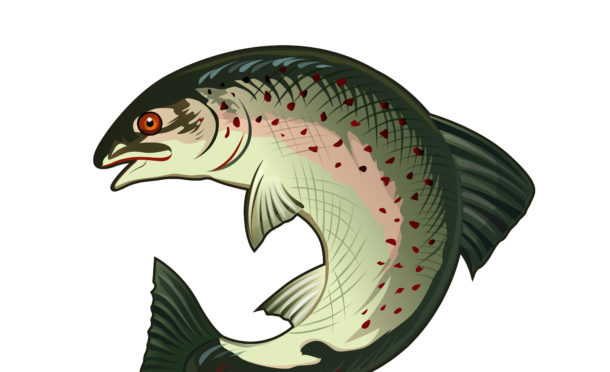
Hundreds of young salmon will be tagged and tracked to help protect them from new farms and wind farms.
The first smolt was caught and tagged on the River Lundy in Lochaber last month as part of research aimed at helping explain the decline in the wild salmon population.
Experts will follow their progress using the acoustic signals, or pings, from the tags that will be picked up by receivers on the smolts’ routes.
Millions of pings will then be collated to give an insight into the distribution of the young fish as they move towards their feeding grounds. The results of the West Coast Tracking Project – due in the autumn – will be used to inform decisions on the site of renewable energy developments and fish farms.
Mark Bilsby, CEO of the Atlantic Salmon Trust which is one of three organisations leading the project, said: “It’s a marine tracking project. The west coast is getting really busy in terms of development, whether it’s aquaculture or renewable energy.
“If we want to protect wild salmon, we need to know where the salmon are going so we can then say that a development going somewhere is right on a migration route and if it’s moved then it will be off the migration route.
“It’s to help inform the policy-makers and fishery managers, that leads them to be better able to protect fish. At the moment we just don’t have that information.”
The project is being spearheaded by the Atlantic Salmon Trust, Fisheries Management Scotland and Marine Scotland.
Teams from a network of fishery boards and trusts, with the support of Glasgow University, will tag smolts from 10 rivers between the Outer Hebrides and Dumfries and Galloway.
About 1,000 smolts will be tagged then the routes they take will be monitored to find out things like the path they choose to navigate around the Outer Hebrides.
A scientific model of the route they are expected to take has been drawn up but the research will establish for the first time whether it is accurate.
Dr Alan Wells, chief executive of Fisheries Management Scotland said: “ This is a fantastic example of collaborative working that will help us to better understand how we can protect our precious wild salmon during the early part of their migration.”
Most of the funding for the project has come from the Scottish Government via the Maritime and Fisheries Fund, with the rest being made up from private and industry contributions. A tracking programme was first carried out in the Moray Firth in 2019 but was aimed at establishing mortality rates rather than distribution.
It is now in its second year after having to be put on hold in 2020 because of the pandemic.
The findings from 2019 showed that more than half of the 850 smolts tagged did not make it further than their home rivers. About 35% made it out to sea as they embarked on their migration, but previous studies have found that only about 5% survive to come back again.
Wild salmon catch numbers in Scotland fell to their lowest-ever level in 2018, and the species was described as “approaching crisis point”. Pressures on wild salmon include predators, rising water temperatures, fish farms, by-catch by fishing vessels and barriers in rivers.

Enjoy the convenience of having The Sunday Post delivered as a digital ePaper straight to your smartphone, tablet or computer.
Subscribe for only £5.49 a month and enjoy all the benefits of the printed paper as a digital replica.
Subscribe